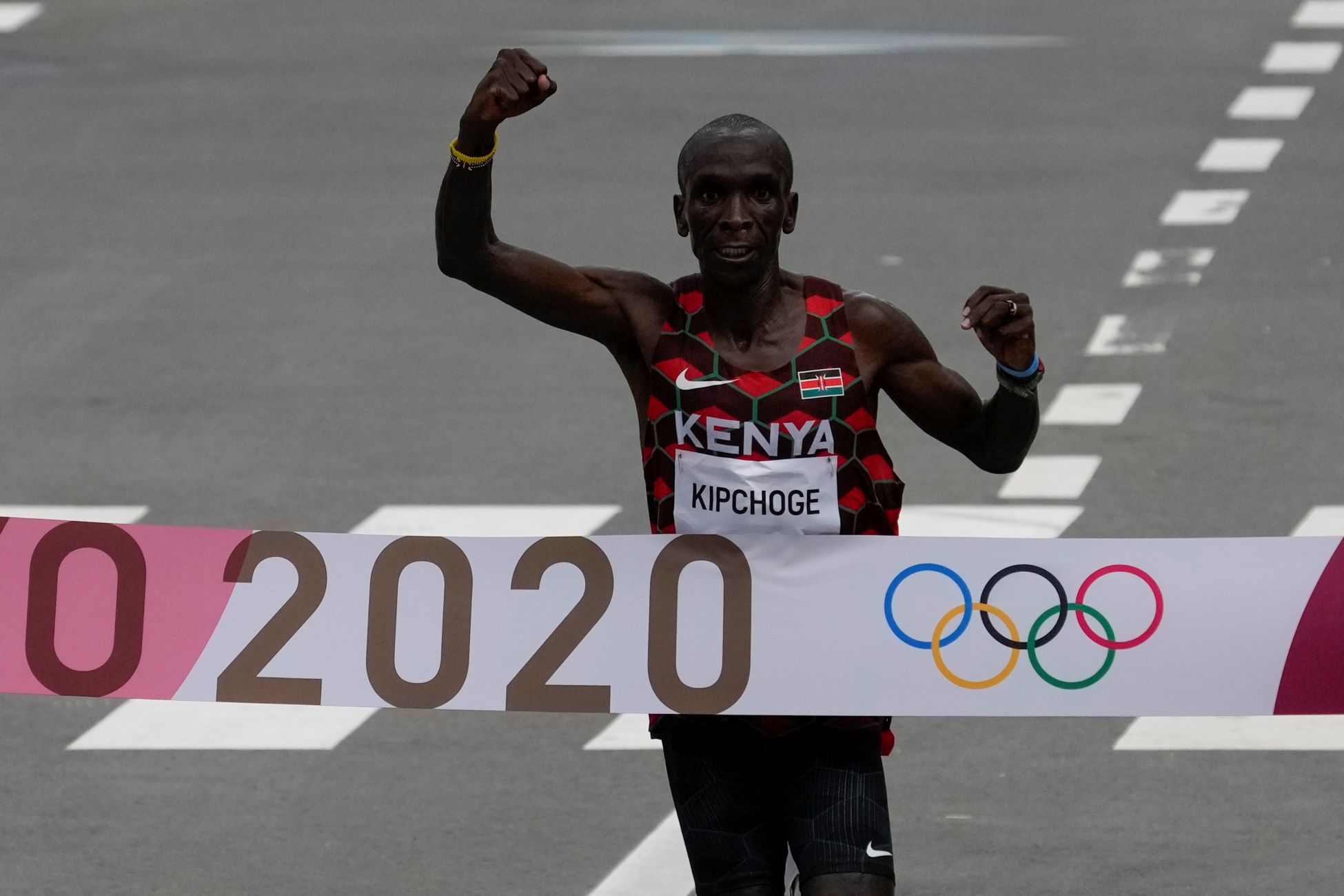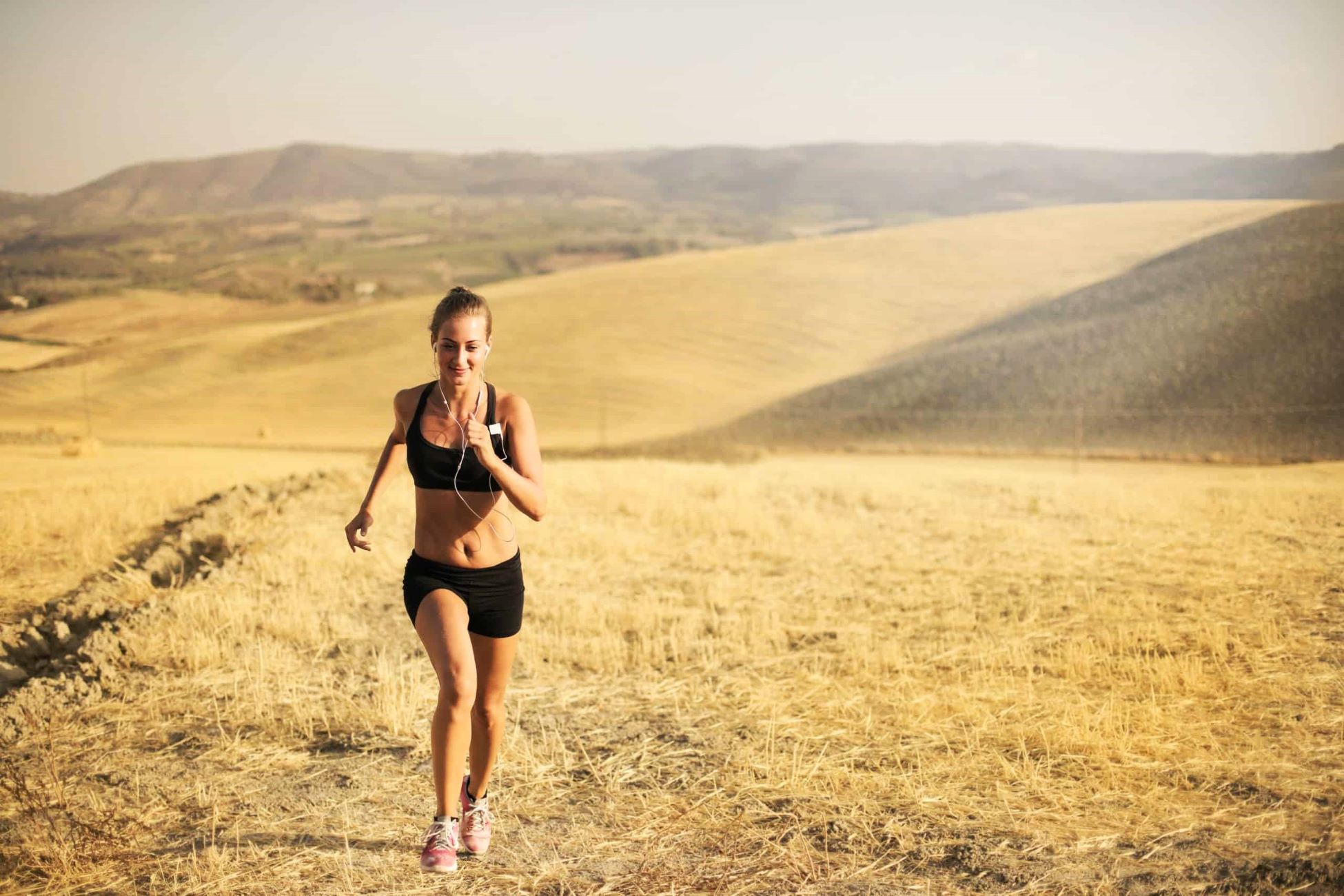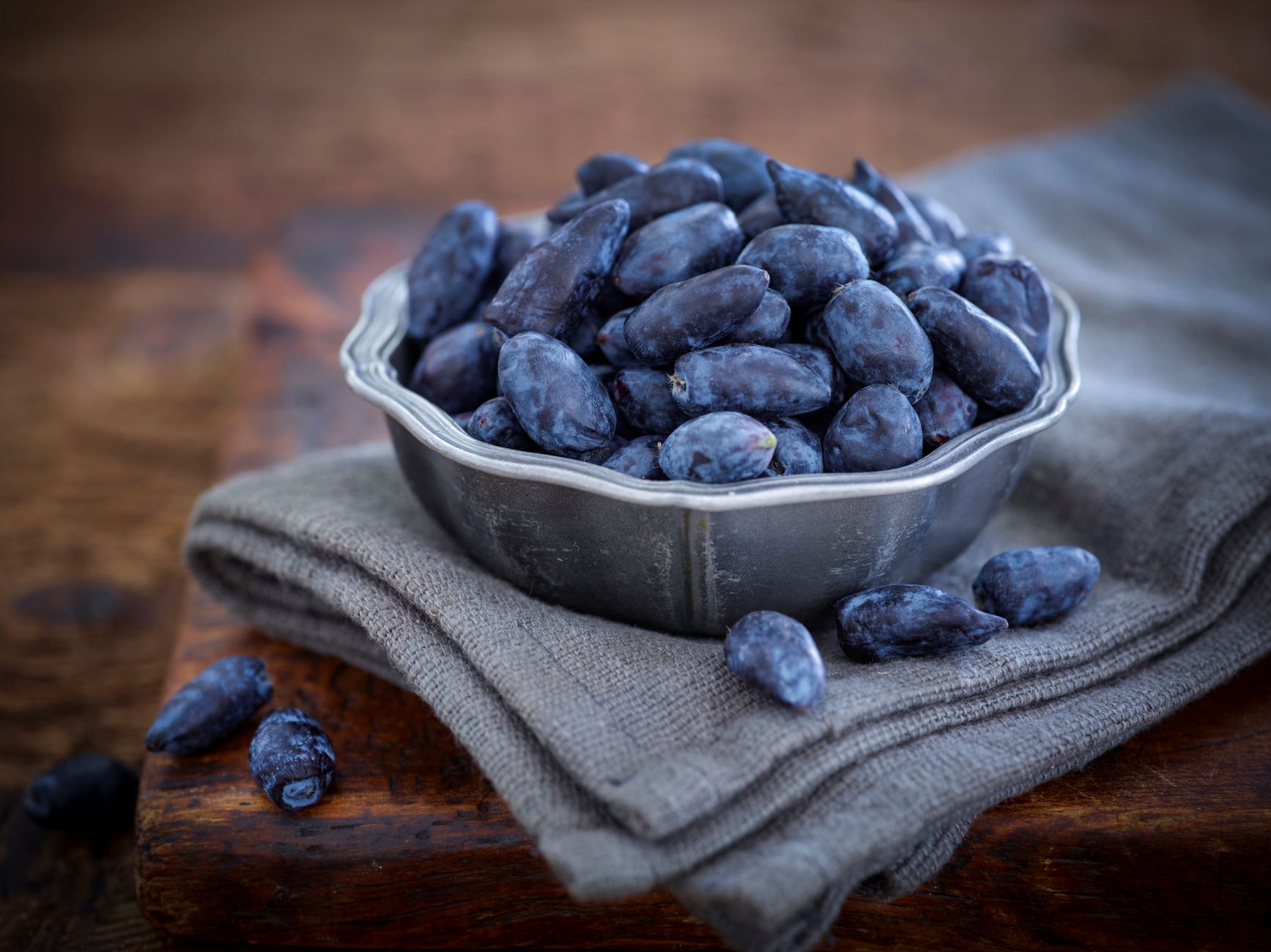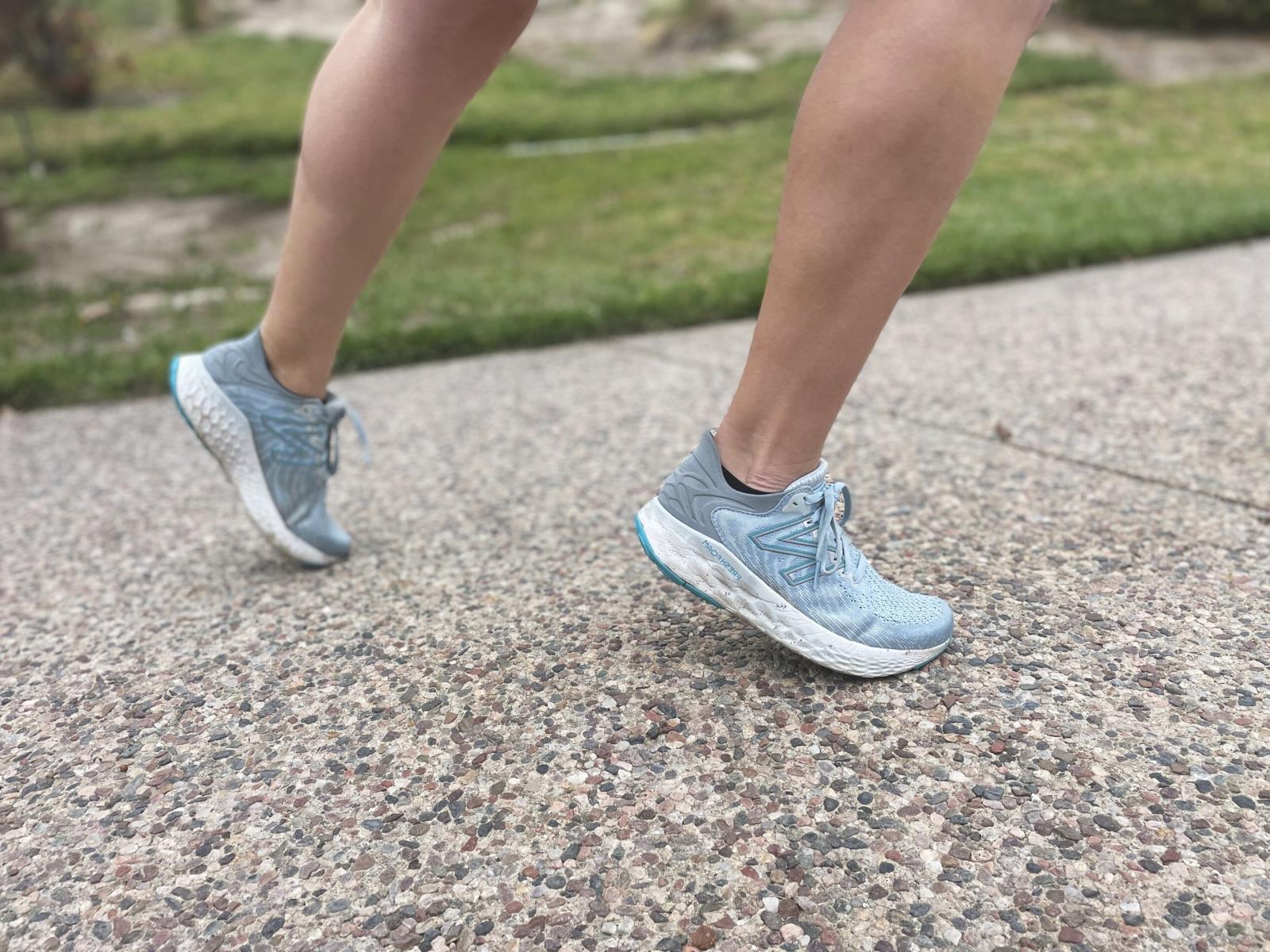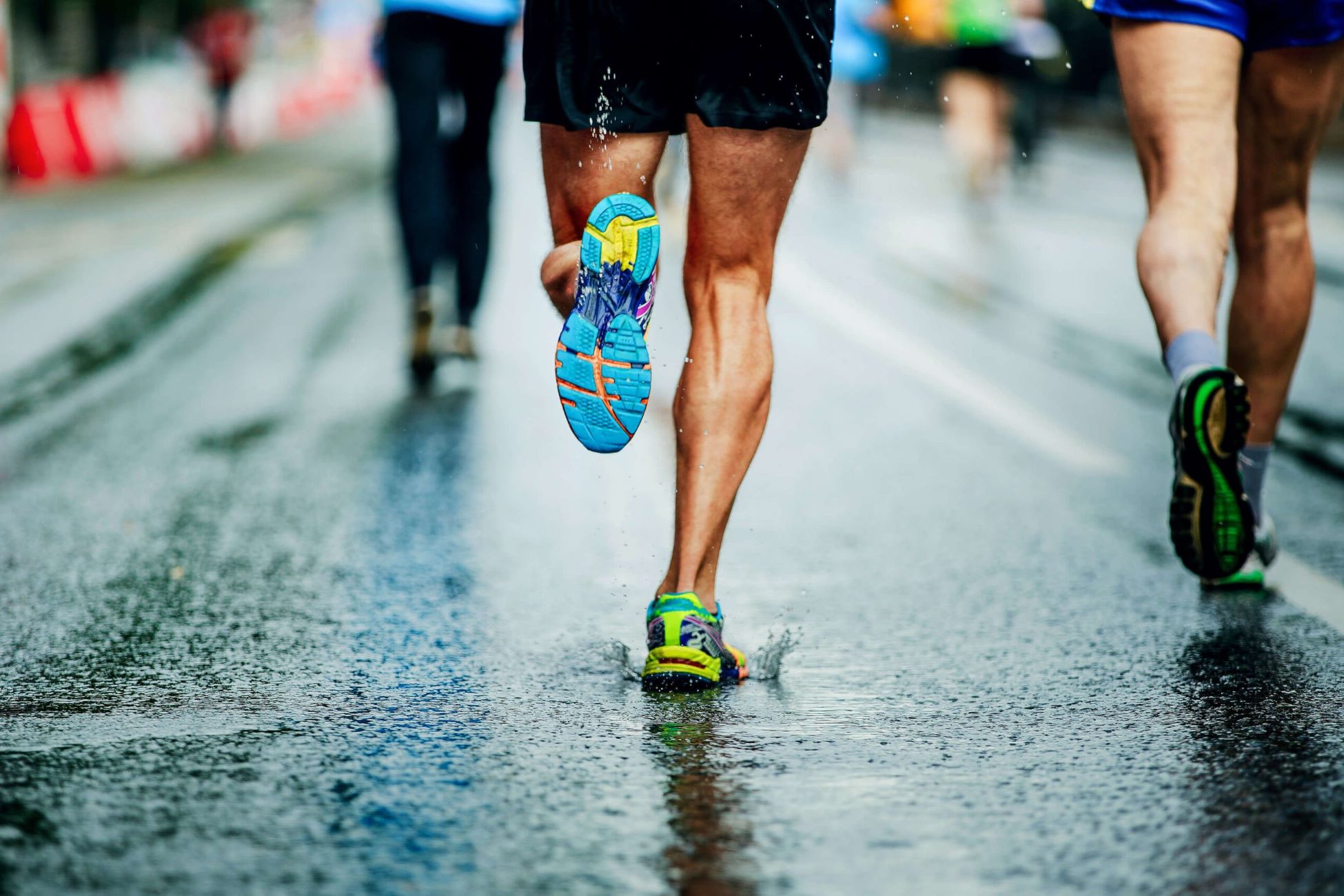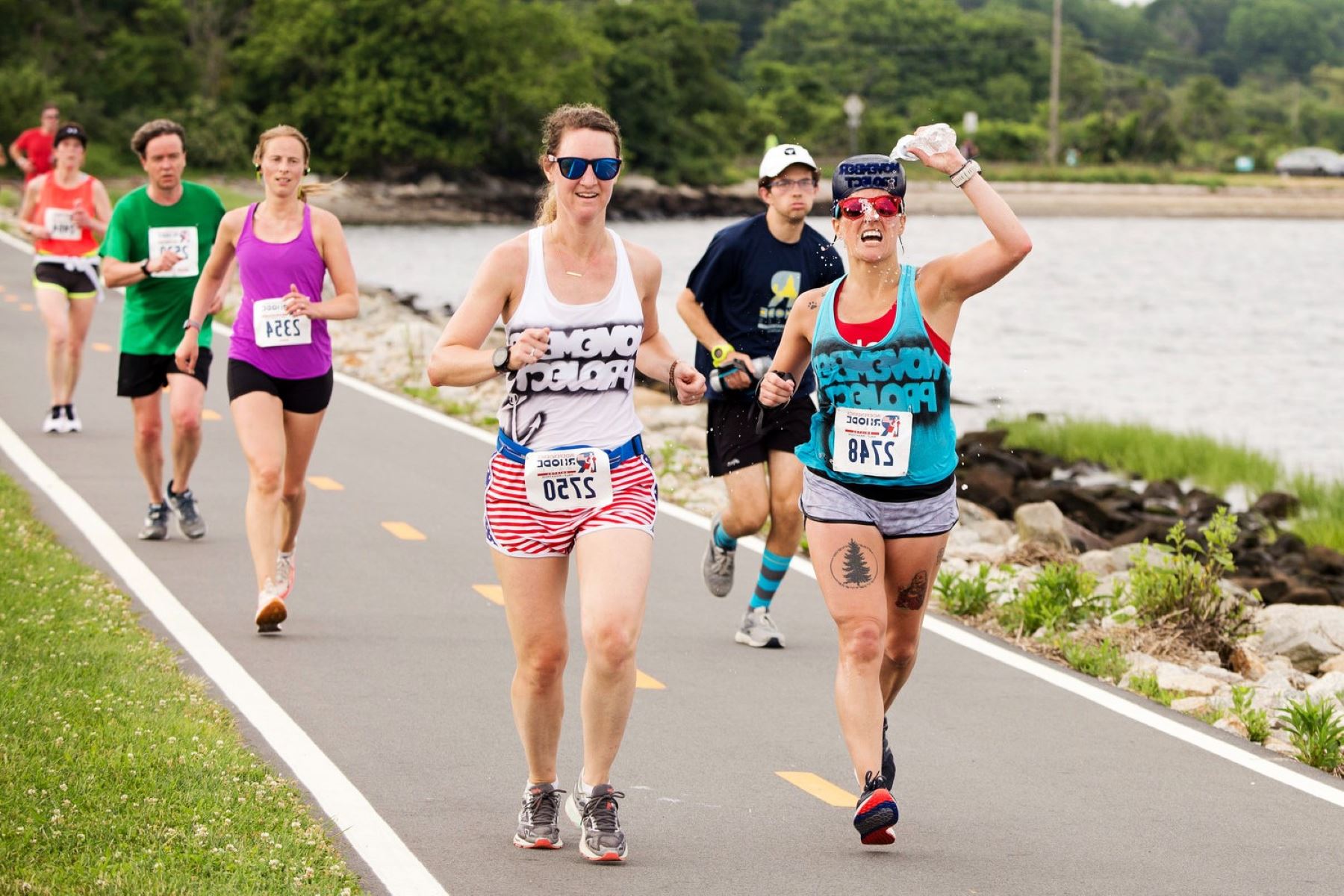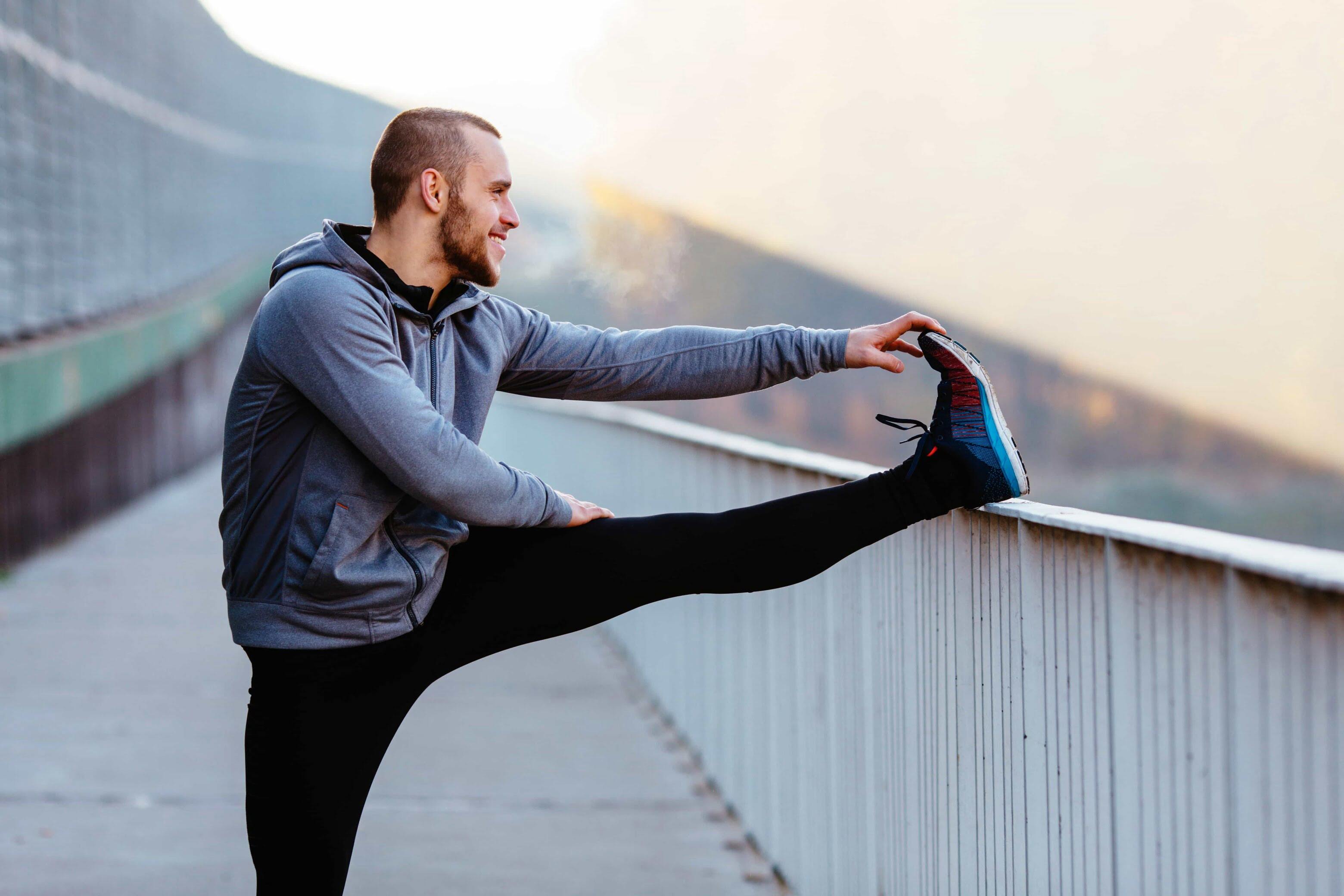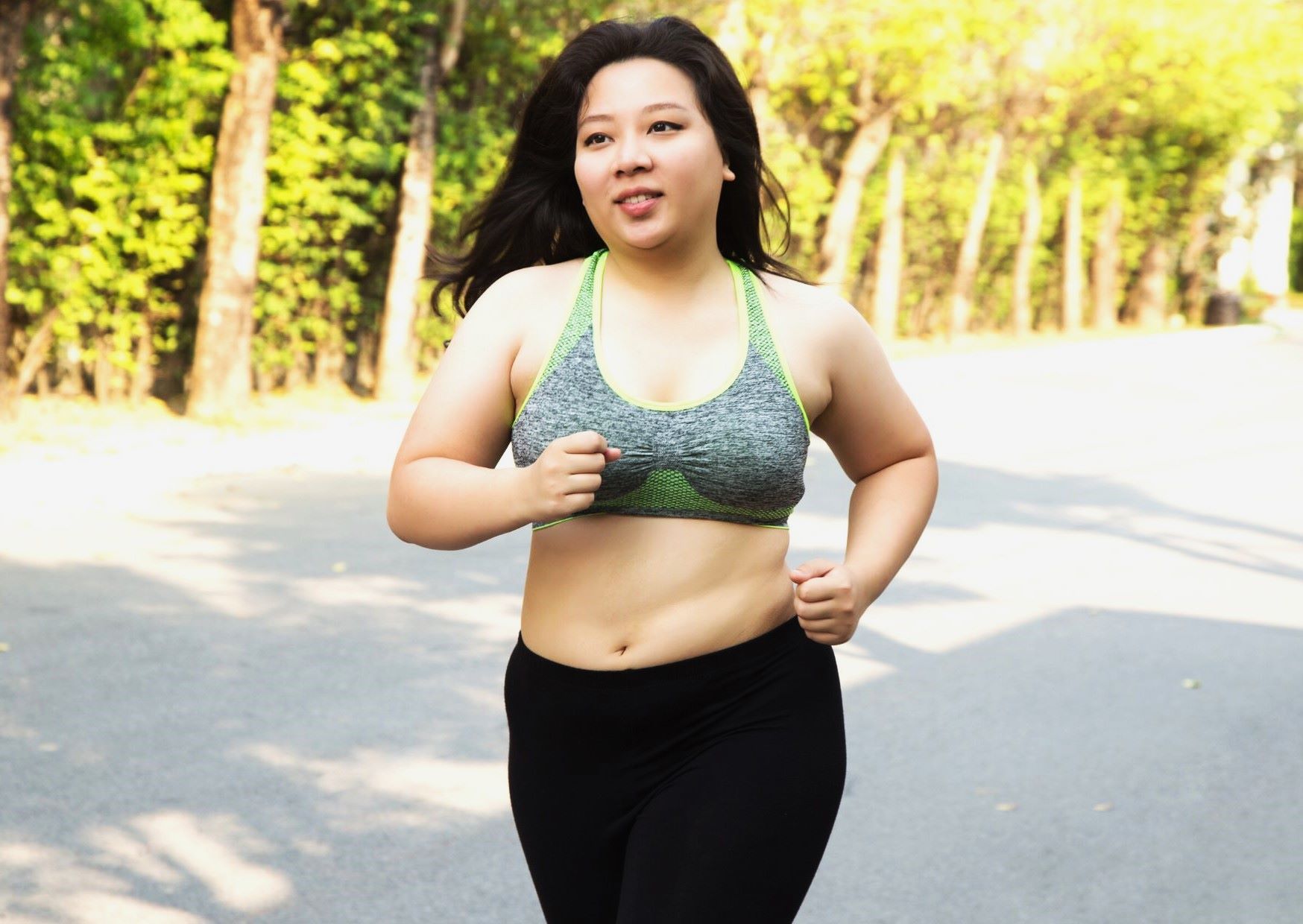Home>Health & Nutrition>Does Weight Affect VO2-max?
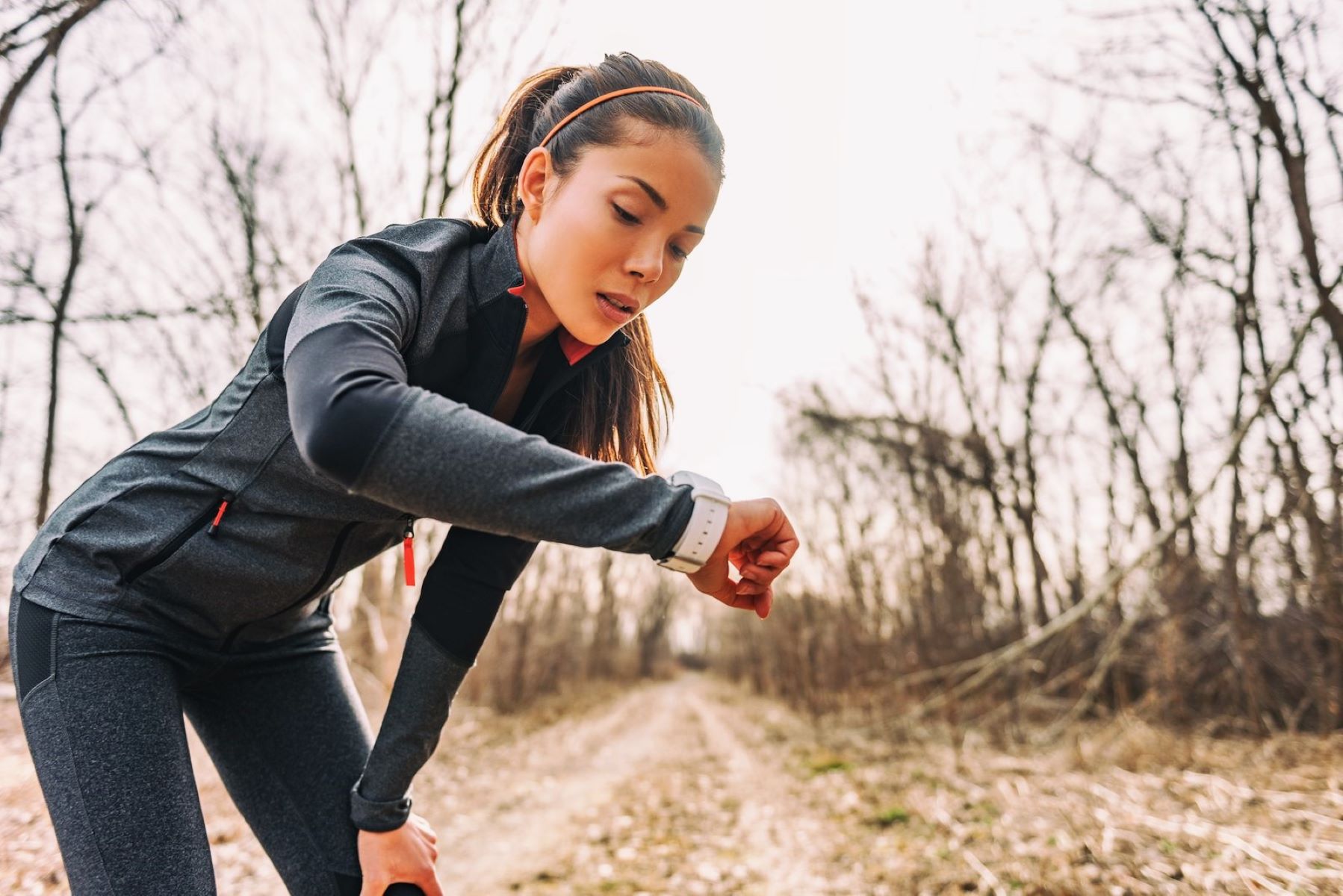

Health & Nutrition
Does Weight Affect VO2-max?
Published: February 23, 2024
Learn how weight can impact your VO2-max and get valuable insights on health and nutrition to optimize your fitness journey. Unlock the connection between weight and VO2-max for better health.
(Many of the links in this article redirect to a specific reviewed product. Your purchase of these products through affiliate links helps to generate commission for Therunningadvisor.com, at no extra cost. Learn more)
Table of Contents
Introduction
The relationship between weight and VO2-max, the maximum amount of oxygen a person can utilize during intense exercise, has been a topic of interest and debate in the health and fitness community. As individuals strive to optimize their physical performance and overall well-being, understanding the impact of weight on VO2-max becomes crucial.
VO2-max serves as a key indicator of cardiovascular fitness and aerobic endurance. It reflects the body's ability to transport and utilize oxygen during prolonged physical activity, making it a valuable metric for athletes, fitness enthusiasts, and healthcare professionals. The concept of VO2-max is not solely limited to elite athletes; rather, it holds significance for individuals of all fitness levels and age groups.
By delving into the intricate relationship between weight and VO2-max, we can gain valuable insights into how body composition influences aerobic capacity. This exploration extends beyond the realms of physical performance, encompassing broader implications for health, longevity, and disease prevention.
In this comprehensive analysis, we will unravel the multifaceted dynamics between weight and VO2-max, shedding light on the interplay of physiological factors, lifestyle choices, and genetic predispositions. By examining the existing body of research and scientific evidence, we aim to provide a nuanced understanding of how weight impacts VO2-max across diverse populations and fitness profiles.
As we embark on this journey of exploration, it is essential to approach the topic with an open mind and a quest for knowledge. By unraveling the complexities of weight and VO2-max, we can empower individuals to make informed decisions regarding their fitness goals, training strategies, and overall health management.
Through this in-depth exploration, we endeavor to demystify the intricate relationship between weight and VO2-max, offering valuable insights that resonate with both fitness enthusiasts and individuals seeking to optimize their health and well-being. Let us embark on this enlightening journey to unravel the fascinating interplay between weight and VO2-max, delving into the realms of human physiology, fitness science, and the pursuit of holistic wellness.
Read more: Experience The VO2-max Test For Yourself
Understanding VO2-max
VO2-max, or maximal oxygen uptake, represents the maximum amount of oxygen that an individual can utilize during intense exercise. This crucial physiological parameter serves as a fundamental indicator of aerobic capacity and cardiovascular fitness. It is measured in milliliters of oxygen per kilogram of body weight per minute (ml/kg/min), providing valuable insights into an individual's endurance and overall cardiovascular health.
The measurement of VO2-max involves rigorous exercise testing, typically conducted in a controlled laboratory setting. During the test, the individual undergoes progressively intense physical activity, such as running on a treadmill or cycling on an ergometer, while their oxygen consumption and heart rate are closely monitored. The test continues until the participant reaches their maximal exertion, at which point their VO2-max is determined based on their oxygen consumption and other physiological parameters.
VO2-max reflects the body's ability to transport oxygen from the atmosphere to the working muscles, where it is utilized to produce energy during prolonged physical activity. It is influenced by various factors, including the efficiency of the cardiovascular system, the capacity of the lungs to extract oxygen, and the ability of the muscles to utilize oxygen for energy production.
Understanding VO2-max goes beyond its significance in athletic performance; it holds profound implications for overall health and disease prevention. Individuals with higher VO2-max levels are often associated with lower risks of cardiovascular diseases, improved metabolic function, and enhanced endurance capacity. Moreover, VO2-max serves as a valuable tool for assessing the impact of training interventions, guiding exercise prescription, and monitoring the progress of individuals undergoing fitness programs.
In essence, VO2-max encapsulates the intricate interplay between the respiratory, cardiovascular, and muscular systems, offering a comprehensive insight into an individual's aerobic capacity and physiological resilience. By comprehending the significance of VO2-max, individuals can gain a deeper appreciation for the intricate mechanisms that underpin their cardiovascular fitness and overall well-being.
The Relationship Between Weight and VO2-max
The relationship between weight and VO2-max is a complex interplay that encompasses the physiological, biomechanical, and metabolic dynamics of the human body. Research has consistently demonstrated a correlation between body weight and VO2-max, shedding light on how variations in weight can impact an individual's aerobic capacity and overall cardiovascular fitness.
Body weight serves as a significant factor influencing VO2-max, with both absolute weight and body composition playing pivotal roles in determining an individual's maximal oxygen uptake. As a general trend, higher body weight often correlates with lower VO2-max values, reflecting the increased metabolic demands and oxygen requirements associated with supporting a larger body mass during physical activity. This relationship underscores the intricate balance between body size, metabolic efficiency, and aerobic performance.
Moreover, the distribution of body weight, particularly the ratio of lean muscle mass to body fat, can exert a profound influence on VO2-max. Individuals with a higher proportion of lean muscle mass relative to total body weight often exhibit enhanced aerobic capacity, attributed to the metabolic activity and oxygen utilization efficiency of muscle tissue. Conversely, excess body fat can contribute to a reduction in VO2-max, as adipose tissue imposes additional metabolic strain and oxygen demands on the body during exercise.
Furthermore, the impact of weight on VO2-max extends beyond static measurements, encompassing dynamic fluctuations in body weight due to factors such as weight loss, weight gain, and fluctuations in muscle mass. Studies have elucidated the potential for significant improvements in VO2-max following weight loss interventions, highlighting the favorable adaptations in cardiovascular function and oxygen utilization efficiency that accompany reductions in body weight and adiposity.
In the realm of athletic performance, the relationship between weight and VO2-max assumes heightened significance, particularly in sports and activities where power-to-weight ratios and aerobic efficiency play pivotal roles. Athletes and fitness enthusiasts often seek to optimize their body composition to enhance their VO2-max, recognizing the performance benefits associated with achieving an optimal balance between lean muscle mass and body weight.
In essence, the relationship between weight and VO2-max embodies a multifaceted interplay that underscores the intricate connections between body size, metabolic demands, and aerobic capacity. By unraveling the nuances of this relationship, individuals can gain valuable insights into the impact of weight on their cardiovascular fitness, athletic performance, and overall health, empowering them to make informed decisions regarding their fitness goals and lifestyle choices.
Factors That Influence VO2-max
Several intrinsic and extrinsic factors intricately influence an individual's VO2-max, reflecting the complex interplay of physiological, environmental, and lifestyle determinants. Understanding these influential factors provides valuable insights into the nuanced dynamics that underpin aerobic capacity and cardiovascular fitness.
-
Genetic Predisposition: Genetic factors play a pivotal role in shaping an individual's VO2-max potential. Variations in genes associated with cardiovascular function, oxygen transport, and muscle metabolism can significantly impact an individual's inherent aerobic capacity. While genetic predispositions establish a baseline for VO2-max, they also interact with environmental stimuli and lifestyle choices to shape an individual's actual maximal oxygen uptake.
-
Training Adaptations: Regular physical training exerts profound effects on VO2-max, driving favorable adaptations in cardiovascular function, muscular efficiency, and oxygen utilization. Endurance training, characterized by sustained aerobic activities such as running, cycling, and swimming, enhances the body's capacity to transport and utilize oxygen, leading to notable improvements in VO2-max. The principles of specificity, progression, and variation in training regimens play crucial roles in optimizing VO2-max through targeted exercise interventions.
-
Body Composition: The composition of an individual's body, encompassing lean muscle mass, body fat percentage, and overall body weight, significantly influences VO2-max. Lean muscle mass serves as a metabolically active tissue that contributes to efficient oxygen utilization, thereby positively impacting VO2-max. Conversely, excess body fat can impose metabolic strain and reduce aerobic capacity, highlighting the intricate relationship between body composition and maximal oxygen uptake.
-
Age and Gender: Age and gender exert notable influences on VO2-max, reflecting the physiological changes and hormonal variations that accompany different life stages and sex-specific characteristics. Generally, VO2-max tends to decline with advancing age, attributed to age-related changes in cardiovascular function, muscle mass, and overall physiological resilience. Moreover, gender differences in body composition, hormonal profiles, and metabolic responses can contribute to variations in VO2-max between males and females.
-
Environmental Factors: Environmental conditions, such as altitude, temperature, and humidity, can impact an individual's VO2-max due to their effects on oxygen availability, thermoregulation, and metabolic demands. Altitude training, in particular, has been utilized to stimulate physiological adaptations that enhance VO2-max, leveraging the body's responses to reduced oxygen levels to optimize aerobic capacity.
By comprehensively examining these influential factors, individuals can gain a deeper appreciation for the multifaceted determinants that shape their VO2-max. This understanding empowers individuals to make informed decisions regarding their training strategies, lifestyle modifications, and overall pursuit of enhanced cardiovascular fitness and aerobic endurance.
The Impact of Weight on VO2-max in Different Populations
The impact of weight on VO2-max varies across diverse populations, reflecting the intricate interplay of genetic, physiological, and environmental factors that shape aerobic capacity and cardiovascular fitness. Understanding how weight influences VO2-max in different demographic groups provides valuable insights into the nuanced dynamics of aerobic performance and the implications for health and well-being.
Athletes and Sports Enthusiasts
In the realm of athletic performance, the impact of weight on VO2-max assumes heightened significance, particularly among athletes and sports enthusiasts. Endurance athletes, such as long-distance runners, cyclists, and triathletes, often seek to optimize their body composition to enhance their aerobic capacity and overall performance. For these individuals, achieving an optimal balance between lean muscle mass and body weight is crucial, as it directly influences their power-to-weight ratio and aerobic efficiency. Moreover, the impact of weight on VO2-max extends to sports that require strength-to-weight ratios, such as gymnastics and weightlifting, where body composition plays a pivotal role in determining an athlete's competitive edge.
Aging Population
As individuals age, the impact of weight on VO2-max undergoes notable shifts due to age-related changes in body composition, muscle mass, and metabolic function. Aging is often associated with declines in lean muscle mass and increases in body fat percentage, which can exert significant influences on VO2-max. Moreover, age-related changes in cardiovascular function and hormonal profiles contribute to variations in aerobic capacity among older adults. Understanding the impact of weight on VO2-max in the aging population is crucial for promoting healthy aging, optimizing cardiovascular function, and mitigating the effects of age-related declines in aerobic performance.
Individuals with Obesity
The impact of weight on VO2-max among individuals with obesity underscores the complex interactions between body composition, metabolic demands, and cardiovascular health. Excess body weight, particularly in the form of adipose tissue, imposes significant metabolic strain and oxygen demands during physical activity, leading to reductions in VO2-max. Moreover, obesity-related comorbidities, such as insulin resistance and cardiovascular risk factors, further influence the relationship between weight and aerobic capacity. Addressing the impact of weight on VO2-max in individuals with obesity is essential for developing targeted interventions to improve cardiovascular fitness, enhance metabolic health, and promote sustainable weight management strategies.
Gender Disparities
Gender disparities in body composition, hormonal profiles, and metabolic responses contribute to variations in the impact of weight on VO2-max between males and females. Generally, males tend to exhibit higher lean muscle mass and lower body fat percentages compared to females, influencing their aerobic capacity and maximal oxygen uptake. Understanding the gender-specific influences of weight on VO2-max is crucial for tailoring exercise prescriptions, optimizing training strategies, and promoting equitable opportunities for enhancing cardiovascular fitness across diverse gender identities.
By comprehensively examining the impact of weight on VO2-max in different populations, we gain valuable insights into the diverse determinants that shape aerobic capacity and cardiovascular fitness. This understanding empowers individuals, healthcare professionals, and fitness practitioners to develop targeted approaches for optimizing aerobic performance, promoting health equity, and fostering inclusive strategies for enhancing cardiovascular fitness across diverse demographic groups.
Read more: Does The Cold Affect Your Running Speed?
Conclusion
In conclusion, the intricate relationship between weight and VO2-max encompasses a multifaceted interplay of physiological, genetic, and environmental factors that collectively shape an individual's aerobic capacity and cardiovascular fitness. The impact of weight on VO2-max extends beyond static measurements, encompassing dynamic fluctuations in body weight due to factors such as weight loss, weight gain, and variations in muscle mass. Understanding the nuanced dynamics of this relationship provides valuable insights into the implications for athletic performance, aging populations, individuals with obesity, and gender-specific influences.
By unraveling the complexities of weight and VO2-max, we gain a deeper appreciation for the interwoven influences of body composition, metabolic demands, and genetic predispositions on aerobic capacity. This understanding empowers individuals to make informed decisions regarding their fitness goals, training strategies, and overall pursuit of enhanced cardiovascular fitness and aerobic endurance. Moreover, it equips healthcare professionals and fitness practitioners with valuable insights for developing tailored interventions that optimize aerobic performance across diverse demographic groups.
The significance of VO2-max extends beyond its role as a metric for athletic performance; it holds profound implications for overall health, disease prevention, and healthy aging. Individuals with higher VO2-max levels are often associated with lower risks of cardiovascular diseases, improved metabolic function, and enhanced endurance capacity. Therefore, by comprehensively examining the impact of weight on VO2-max in different populations, we can develop targeted approaches for promoting cardiovascular fitness, optimizing metabolic health, and fostering inclusive strategies for enhancing aerobic capacity across diverse demographic groups.
In essence, the relationship between weight and VO2-max serves as a pivotal nexus where human physiology, fitness science, and the pursuit of holistic wellness converge. By delving into the complexities of this relationship, we can empower individuals to make informed choices that optimize their cardiovascular fitness, enhance their overall well-being, and foster a culture of inclusivity and equity in the realm of health and fitness. As we continue to unravel the intricate dynamics of weight and VO2-max, we embark on a journey of enlightenment that transcends the boundaries of physical performance, resonating with the broader aspirations for health, vitality, and the pursuit of a balanced and fulfilling life.

